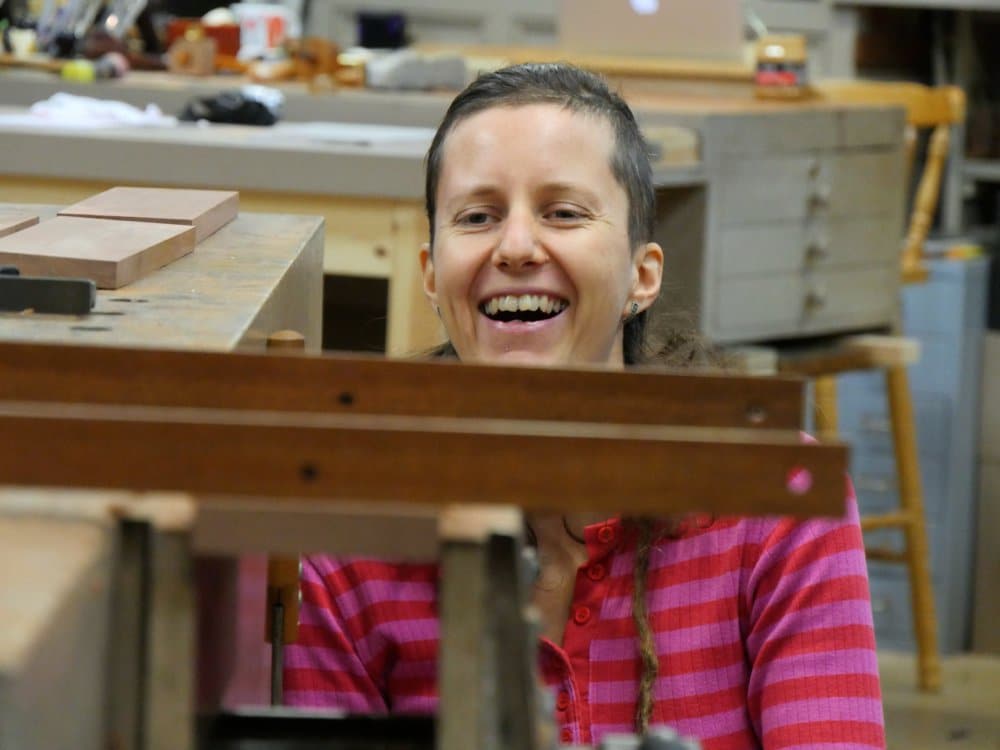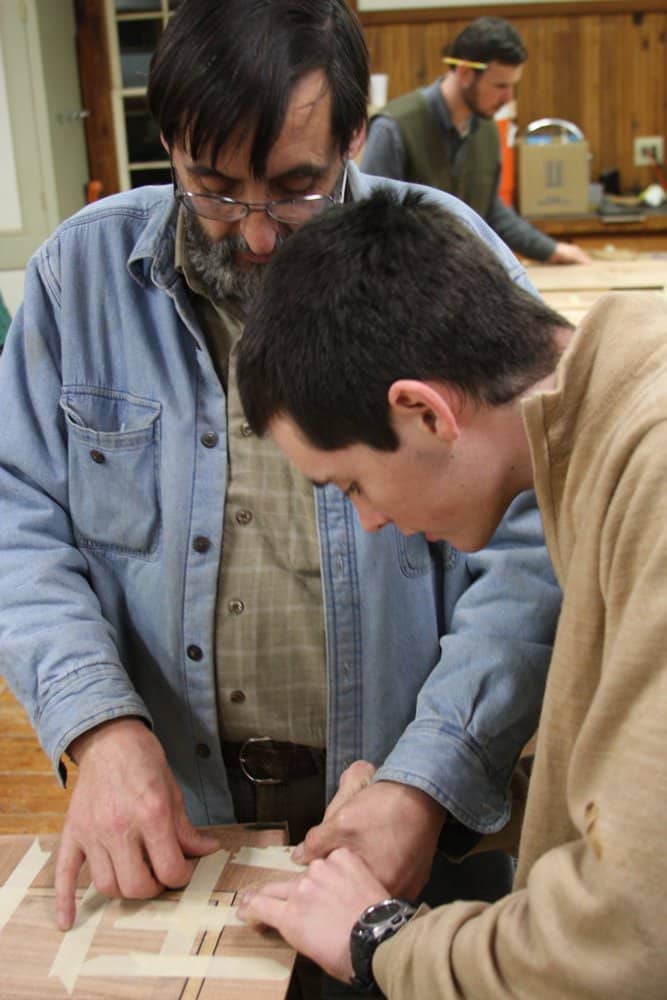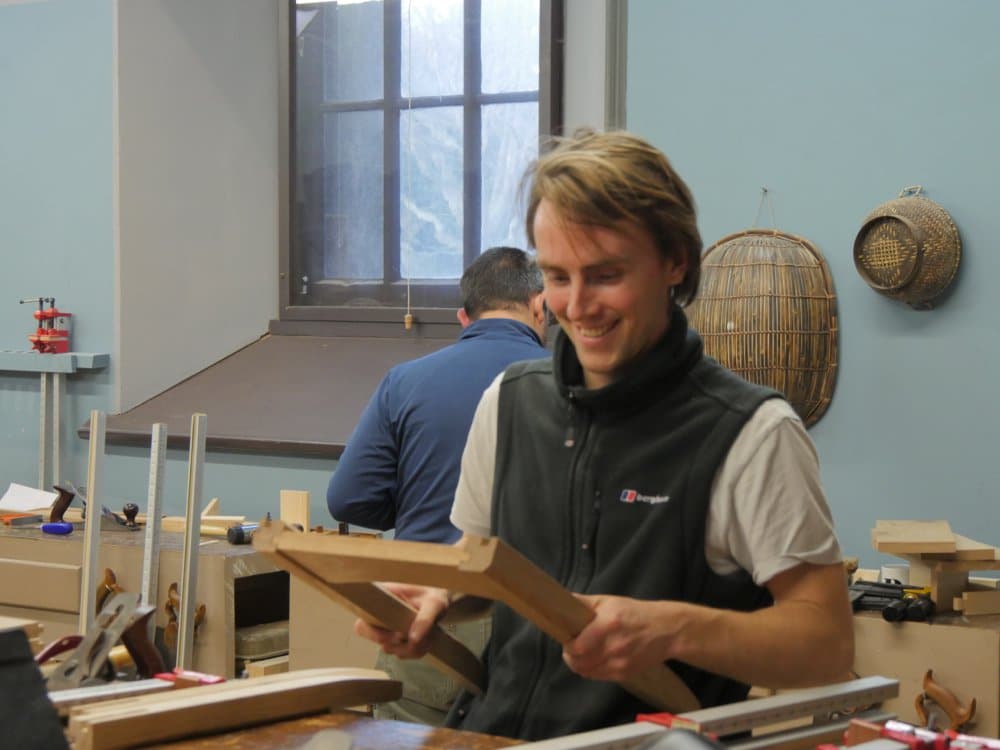New tools and old tools
Both have worth but not all worth is equal of course and sometimes lesser worth is worth all the more. This week I bought three secondhand planes for teaching the school classes as we often restore one in the classes each time. It’s not just that they are cheap or old but that they have the greater value beyond what you get in paying for a new model made perfect in the box or even whether they work or not. The value in an old plane is that it offers a vehicle of recovery. This recovery is a working knowledge of the plane and how it works, how to repair them and restore them. It’s the same with saws and gouges, sliding bevels and mortise gauges too. This alone leads to enlightening, educating, empowering, equipping and so in. So you see these simpler things are the perfect way to bridge the years of neglect when knowledge from crafting makers like myself passed on their experience as users.
I open with this to say yes, we need to buy tools, but that we also need to understand why my blog exists and why we created Paul’s blog, the YouTube channel, woodworkingmasterclasses.com and why we teach the classes wherever and whenever we can. If we go back too my first ever classes 25 years ago, I provided free instruction to answer a cry from others seeking to develop skilled woodwork that I felt I could give answers to. Five years unfolded to my giving workshops and they passed with great enjoyment. Giving classes at weekends for adults and then for 20 years or so since, the enjoyment and sense of purpose and wellbeing never waned. This birthed a development in me to become as much a woodworking teacher as a maker and so my lifestyle became inclusive not exclusive as in times past. I never stopped making and selling so my new workload was over and above my existing output as a designer maker.
My interest in the future of woodworking soon became clear to me. If we did not dismantle the invasion of machine only woodworking two thirds of the population interested in getting started would be left outside the door. Such is the reality of what happened through TV programmes promoting machine only methods and of course magazines in the USA and the UK. That has somewhat changed through our work for change. I gave classes four evenings a week from 7—10pm for 40 to 60 children in any given week and never charged children or parents because it was important and I continued to earn my living as a woodworking furniture maker full time during the day. It was my belief that children needed skills for their future but that the best way to preserve a craft is in the planting of it in the lives of the young who, like me, might find their calling early enough not to be over influenced by bad advice. I watched them laminate wooden strips to form canoes and build cellos, guitars, chests of drawers, wooden spoons and spatulas. They trained me to understand what it took to be a teaching writer and I made room in this aspect of my life. I wrote curriculum they could follow and grow with and it gave me a more balanced perspective on how best to train up the next generation of craftsmen and women. 




Paul,
It’s amazing how often your blog posts strike home with me, in terms of timing. It’s almost eerie.
With regard to children, and tools, and some of your recent comments about education, earning a living, and passing on the tradition . . . . . a story . . . . .
It’s a long story, but I know that if any group of people on earth will appreciate it, it’s you, and your regular readers. But it’s written really for one person, and if he’s the only person who reads it, that’s fine. He will know I shared this, and that’s what matters most.
My father in law Ray is in his 70’s. Ray never stepped foot on a college campus until he took my wife to hers. He graduated from what we in the US call High School in 1957, with his wits and a handful of basic welding, carpentry, automotive, and electrical skills, and went to work in a factory making light bulbs.
Some years later he was fixing machines that make light bulbs, then designing them. Soon after that he was traveling the world installing them in factories in what was in that less sensitive time called the “Third World”.
Next time you see a fluorescent light, think of Ray. He conceived, refined, designed and patented new ways of making florescent bulbs that drastically reduced their manufacturing complexity (US patents 3014196, 5013962 for the curious).
The world is quite literally a brighter place for Ray having lived in it.
I know what people say about work under fluorescents . . . and I too prefer natural light. But for millions around the world, cheap electric light literally made the difference between prosperity and poverty. For large parts of the formerly “Third” world, it was the ability to work second and third shifts that lifted entire countries out of poverty.
Next time we read about a newly minted tech CEO from India, graciously thanking his parents for getting him to that career pinnacle, it’s likely that they saved up for his education by working under inexpensive fluorescent light. Not wood-related at all, but great example there of someone even in utterly modern high tech who understands what “tradition” really means, and has gratitude in his heart.
Ray is not what many joiners or cabinetmakers would call a master craftsman. I doubt he ever inlaid wood. He never carved his own rosettes in cherry. In fact most of his projects were made out of what we’d now call “reclaimed” wood. I’ve restored and refurbished several of them and noted his lack of faith in glue, and what I feel is a possible over-reliance on metal fasteners.
His mortises and dovetails were all cut on a jig of his own design, on a band saw or a table saw. For Ray, chisels were an occasional necessity, not a constant go-to tool. He taught me in my 30’s how to four square a board, but in his own work he seems to not have cared much about faces. Most of them were sanded not planed.
But the carcases are geometrically perfect. They are like the chassis of Lotus cars from the 60’s (“build it strong then add lightness”). I’m sure Ray never read Moxon or any other “classic” on joinery, but the proportions between his tenons and mortises are perfect.
Last year Ray gave me a small Simonds 10 tpi crosscut saw that had been in his family. It was my first “real” handsaw, and when I got it, the handle was covered in 50 years of paint. (His family were signpainters.) It was dull. So it forced me to learn how to sharpen, and after carefully stripping away layers revealed an applewood beauty of a handle that still bears the original bandsaw marks from its manufacture, probably around 1918. I cherish that little finish saw and it cuts like nothing else I have.
This weekend my 7 year old son and I began work on a 1/3 scale Sellers-style bench for him. Kevin used that very Simonds saw to cut his very first 2×4, using the knife wall technique I learned here on Paul Sellers Blog. Words can’t describe the light in my son’s face when he finished that cut, or how happy it makes me to tell the story.
Ray has not been very well for the last couple years. He’s not usually one to visit, and he spends most of his time quietly, with his dear wife Peg. But I was restoring a dresser he’d built, and I’d asked him if he had a couple of long clamps that I could use, and he suggested I come on down.
Ray has moved into seniors’ housing and no longer has a 40×32 shop filled with dust and tools and the obvious signs of hard work done joyfully. He had to use a walker, but hut he brought us out to his tiny and immaculately clean garage, where sitting on the bench top there was not only a pair of Jorgensen pipe clamps, but a huge, old, well proportioned, hand made tool tote.
Inside that tote were 3 immaculate hand saws, a perfect Millers Falls brace, a patinated Stanley 220, and a well used but beautiful Stanley “O” level, among many other things, generally pre-1940 vintage. He said this was the “good stuff”, that he had accepted he was never going to use it again, and wanted me to have it.
My son thanked “Grampy” for that great handsaw he’d given Dad, which “cuts good” and which unlike “the yellow saw” (my 10″ electric compound miter) he could actually use.
I was glad I was wearing my sunglasses, and that I had the convenient excuse of having to load the tools in the car. I’m not sure why I’m growing so sentimental, but I needed to walk away and get myself together.
So Ray if you’re reading this, thank you for the tools, but more importantly for everything you are, and that you’ve taught me. I’m sorry if it’s awkward I wrote it on a blog, but I just couldn’t get this out on Sunday without losing my composure.
The wealth and of knowledge that you have held out to your readers open handed is priceless! I often doubt myself and my decision to pursue lifestyle woodworking, but your blog and videos have been uplifting as I figure it out. As my knee heals (i injured it in january had surgery and am recovrring on workers comp) and I am able to do more I am realizing that the time I have been able to spend watching yours and others’ videos during my rehab will stay with me as I put it to practice. Thank you.
It’s because there is heart that it matters.
Looking at woodworking as a hobby I was initially filled with trepidation and fear about the costs of equipment and workspace, it seemed exclusive, a hobby for those who could afford a 100 sq ft of workshop filled with thousands of pounds-worth of machinery.
Thanks Paul for setting me right, the girlfriend and my wallet thank you too.
Hi Paul,
Any chance of some Woodworking Masterclass videos on making canoes and guitars? We’d love to see those in the future.
Building a canoe with my children would be brilliant.
regards
Paddy
M PF: I don’t write nearly as well as you do, but if I could I would have said something like what you wrote. I understand exactly how you feel. I often think how sad it is that when someone like Ray goes away, all the accumulated knowledge of a life time goes with them. I have heard it said that a person is not gone as long as someone remembers them. I’m sure Ray will be around for a long time.
There is something so profound about matching the value of education, experience, and enlightenment with the gratification of making something with your hands. For all the work we put into buying new tools, its so refreshing to take a different perspective.
I want to “+1” everything about this … doing stuff with your son, getting him away from electronics for a while, carrying on from Ray’s hand tools. I love the idea of good tools, living generation after generation.